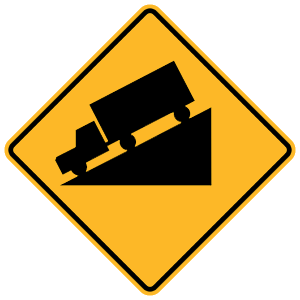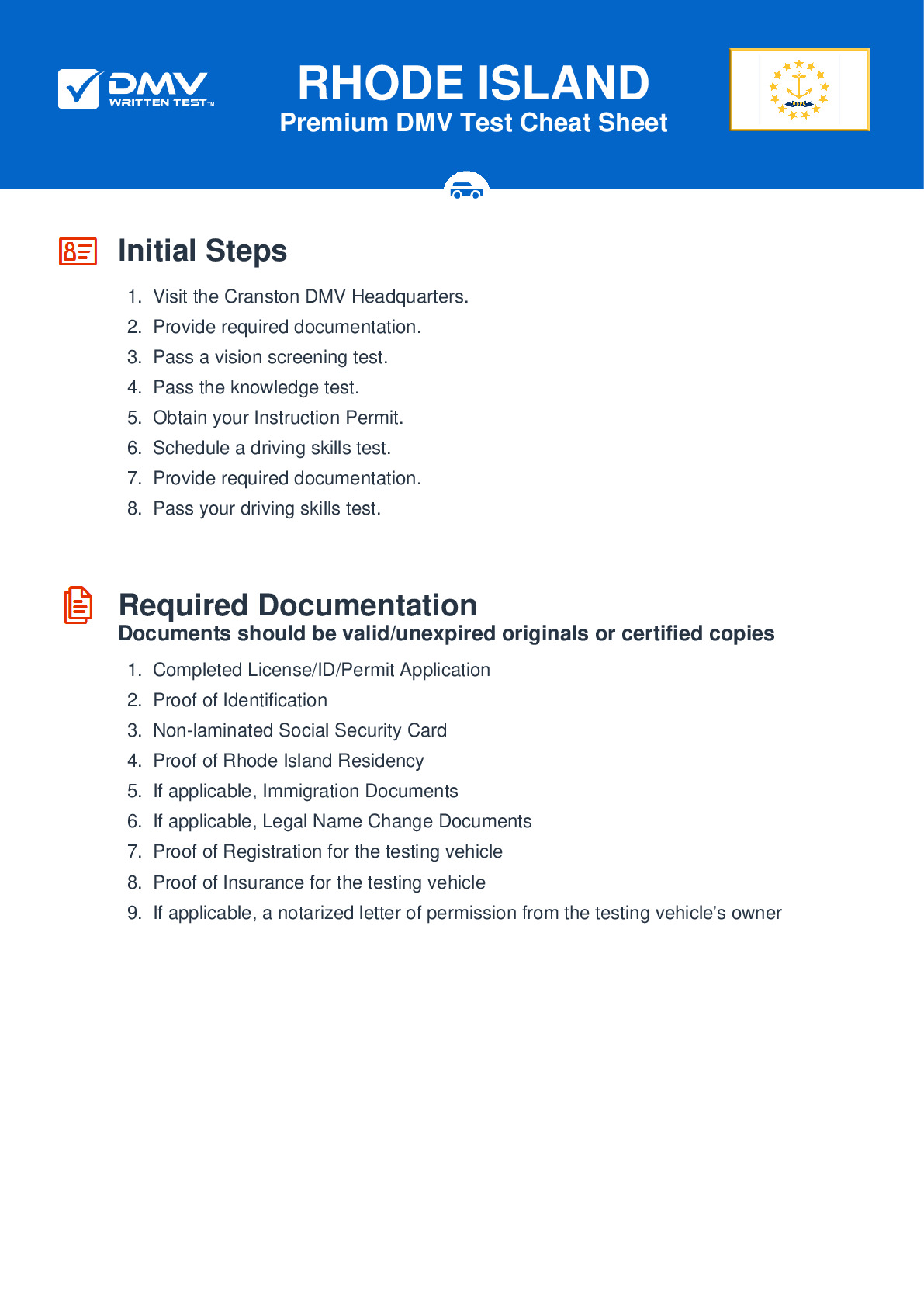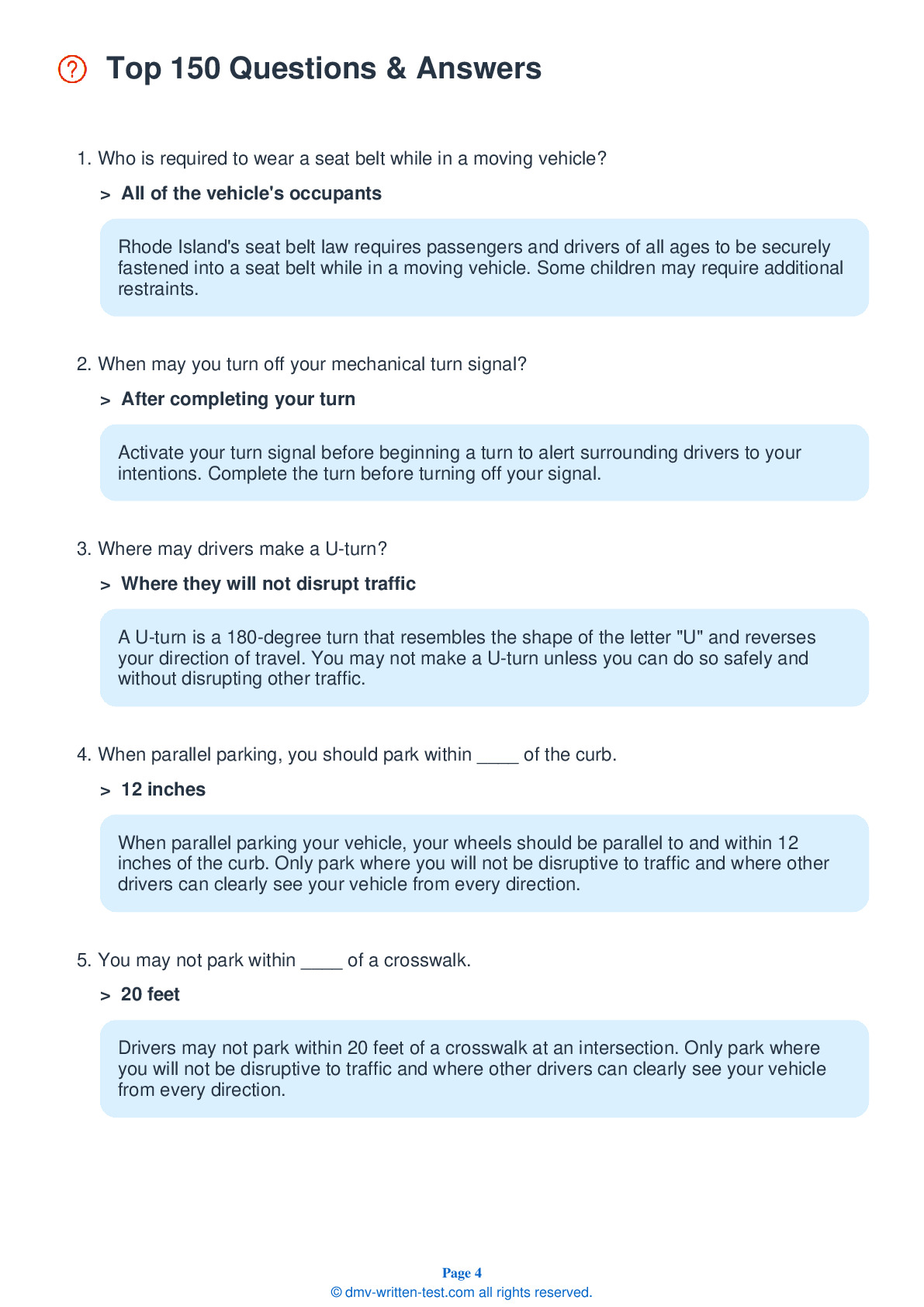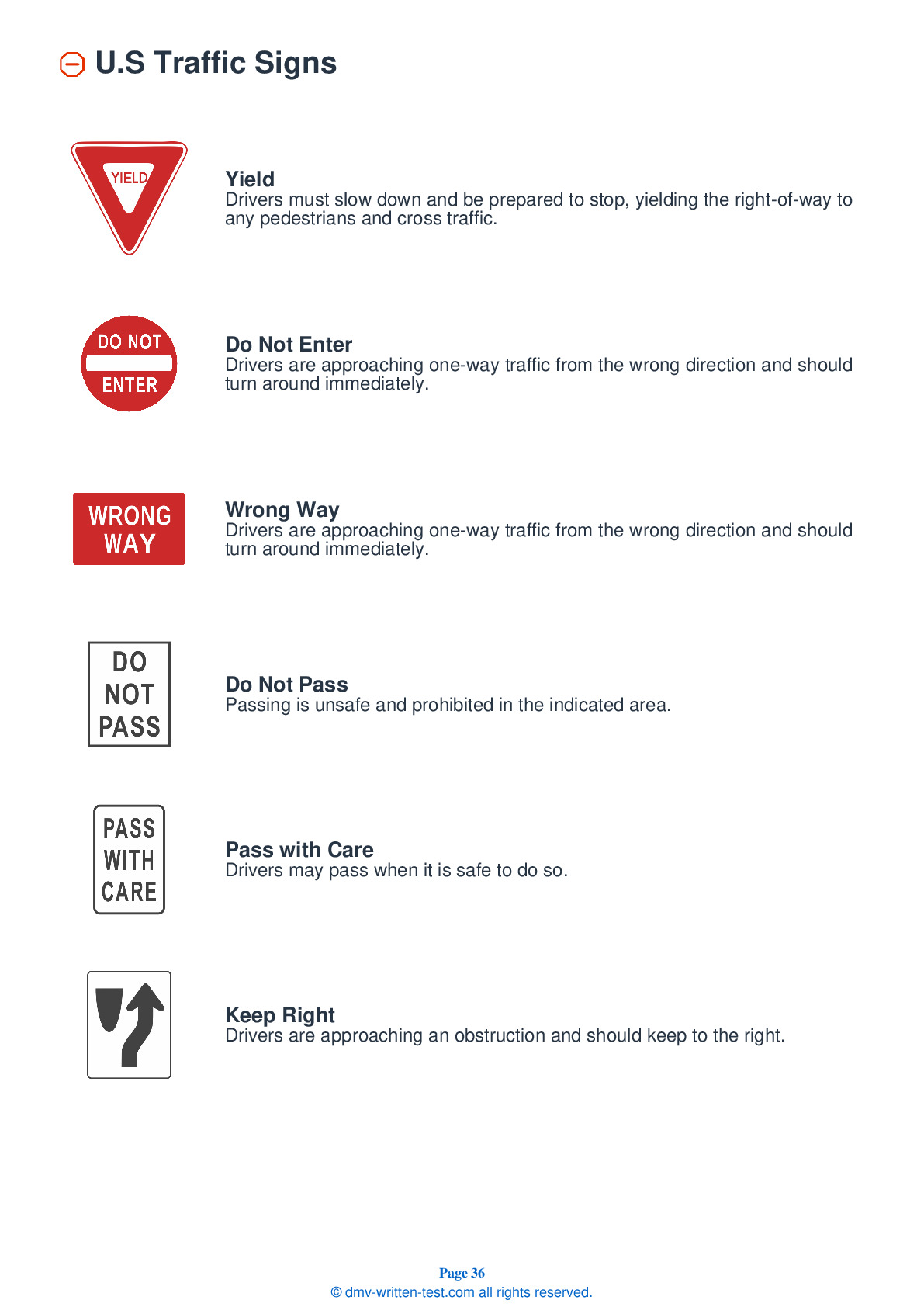2025 Rhode Island Permit Test 9
The following questions are from real DMV written tests. These are some of the actual permit questions you will face in Rhode Island. Each permit practice test question has three answer choices. Select one answer for each question and select "grade this section." You can find this button at the bottom of the drivers license quiz. For a complete list of questions and answers for Rhode Island please visit https://cheat-sheets.dmv-written-test.com/en/rhode-island/car.
Number of Tests
Number of Question
Passing Score
9. Signs that are colored orange are:
Explanation
Highway work zones are established according to the type of work underway along the roadway. Signs in work areas are typically diamond-shaped, orange, have black letters or symbols, and serve as a warning that people are working on or near the highway.
10. This sign means:
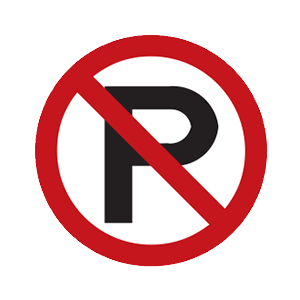
Explanation
Regulation signs regulate traffic speed and movement, displaying rules which drivers must obey. This regulation sign indicates that parking is not permitted.
11. Which of the following is not a safe driving practice when driving on the interstate?
Explanation
You should always signal when moving your vehicle to the right or left. On an interstate, you should stay in the right lane if you are moving more slowly than the surrounding traffic. It is illegal to back up or make a U-turn on interstate highways, so if you miss your exit, you should proceed to the next exit.
12. Which of these statements is true about drugs and driving?
Explanation
Legal prescription and over-the-counter drugs can impair your ability to drive, including drugs taken for colds, hay fever, allergies, or to calm nerves or muscles. It is illegal to drive while under the influence of any drug that impairs your ability to drive safely; this law does not differentiate between illegal, prescription, or over-the-counter drugs.
14. A railroad crossbuck sign should be treated the same as a yield sign.
Explanation
A railroad crossing crossbuck sign is considered a yield sign and a driver must yield the right-of-way to any oncoming trains and railroad equipment.
15. When driving on wet pavement, it's important to remember:
Explanation
Wet roadway surfaces can be dangerously slick, especially immediately following a rainfall. When you are driving on wet roads, your vehicle is traveling on a thin layer of oil, dirt, and water. Slow down when there is heavy rain, standing water, or slush on the road to reduce the risk of your wheels losing traction on the slick surface.
16. When driving in fog, you should use your high beam headlights.
Explanation
